By Jennifer Creery, Tom Grundy & Kris Cheng
Undeterred by a police ban, hundreds of thousands marched in Kowloon on Sunday in opposition to an anti-mask law imposed by the government.
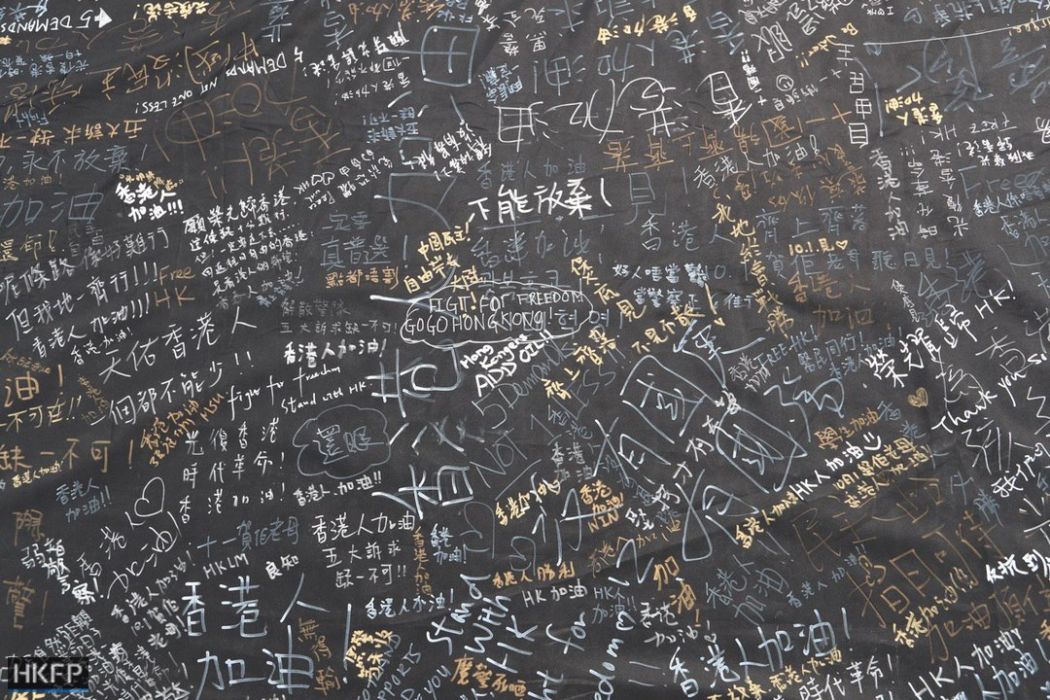
But familiar scenes of unrest broke out within hours as water cannon, projectiles and tear gas were deployed by riot police.

Protesters threw Molotov cocktails, set fires, vandalised stores, MTR exits and Chinese banks, as they blocked roads and built makeshift barricades.

The anti-mask law was implemented two weeks ago using the 1922 Emergency Regulations Ordinance.

Offenders face up to a year in prison for wearing a facial covering at an authorised or unauthorised protest.
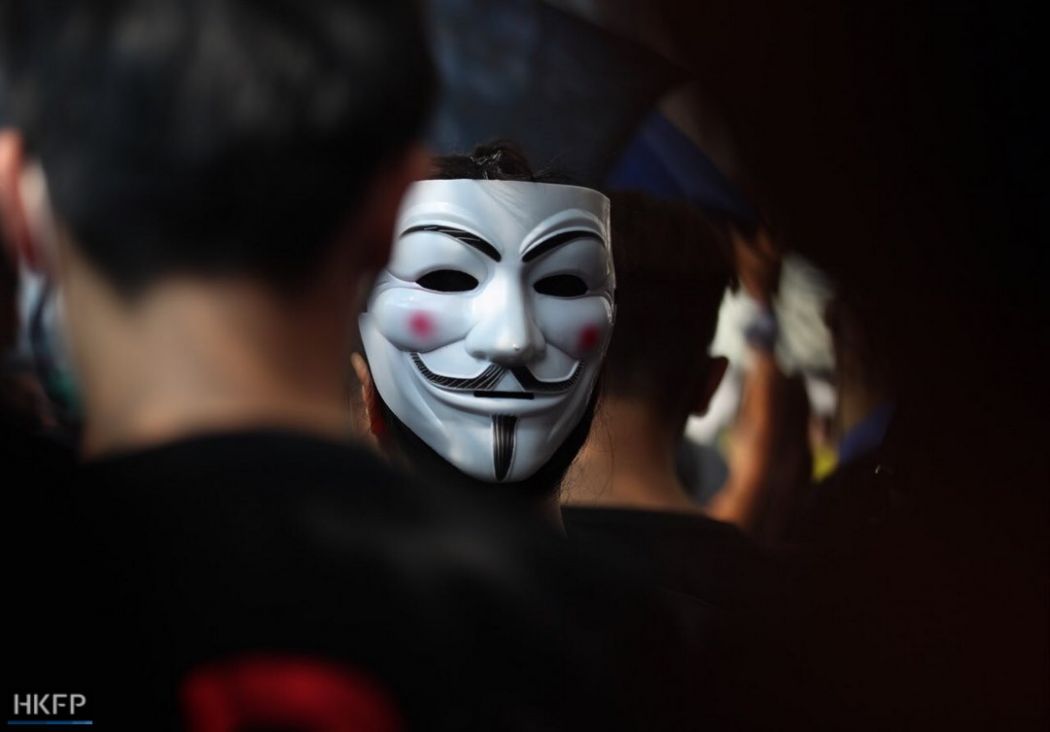
However, few protesters ditched their masks at Sunday’s march, which did not receive police approval.
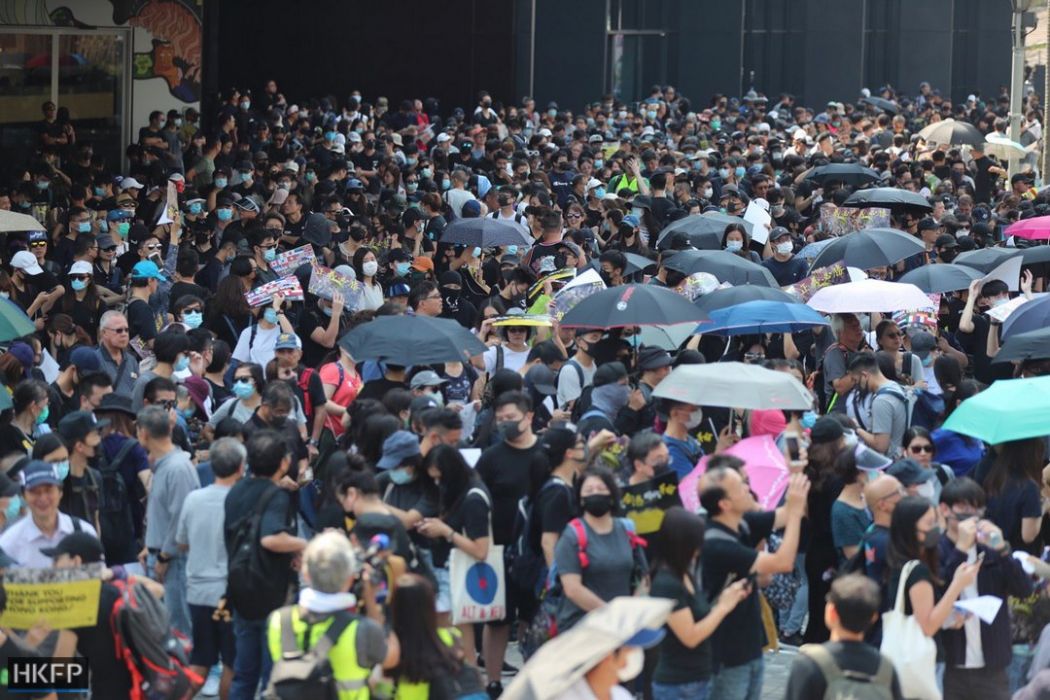
The protest was originally set to end at the West Kowloon terminus of the Express Rail Link.

Organisers, the Civil Human Rights Front, officially abandoned their protest plans after an appeal to overturn the police ban failed, but demonstrators marched nonetheless.

Figo Chan, vice-convener of the pro-democracy coalition, as well as several former pro-democracy lawmakers, led the march. Protesters marched anyway to the terminus.
Protesters rush away from a section of Nathan Road after the water cannon truck fires blue liquid. Some have hit reporters.#hongkong #hongkongprotests pic.twitter.com/cWyhMtunwF
— Hong Kong Free Press (@HongKongFP) October 20, 2019
Chan estimated that around 350,000 had attended the march.

Several MTR stations in Kowloon were closed at noon in anticipation of the march owing to “protest and police actions.”

By mid-afternoon, Tsuen Wan Line stations between Tsim Sha Tsui and Prince Edward were closed, along with Kwun Tong Line stations between Yau Ma Tei and Prince Edward stations and West Rail Line stations between East Tsim Sha Tsui and Austin station.

Meanwhile, West Kowloon Station – the proposed end-point of the march – remained closed for members of the public without tickets, with all stations set to close at 10pm. The MTR Corporation has been under fire after the largely government-owned transit firm declared it would close stations in the area of protests.

A 55-year-old retiree, who gave his name as Mr Lee, told HKFP that despite the police ban on the original march he decided to attend Sunday’s gathering to exercise his freedom of expression: “[The police] don’t have the power to limit my breathing, my right to walk on the street. This is my freedom,” he said. “I am just one person. It is my responsibility to be here.”
A Molotov cocktail has been thrown against the gate in front of Tsim Sha Tsui police station.#hongkong #hongkongprotests pic.twitter.com/ZUyQiFUTWw
— Hong Kong Free Press (@HongKongFP) October 20, 2019
Although some protesters marched to West Kowloon station, many continued to proceed northwards on Nathan Road, blocking traffic and chanting “Hongkongers resist.”

Some carried giant black banners representing different districts across the city.

“Five demands not one less,” read one. “Liberate Hong Kong, revolution of our times,” read another one, reflecting popular protest slogans.

A 21-year-old university student, who gave her name as May, told HKFP that police Letter of Objections had little meaning anymore since officers have used tear gas and other crowd control measures against protesters regardless of whether the gathering was authorised. “It’s very unpredictable,” she said. “[The police] have prepared the water cannon at the West Kowloon railway station and just now they’ve raised the blue flag so maybe today will be more aggressive.”

Some demonstrators surrounded Tsim Sha Tsui police station and hurled Molotov cocktails into the police grounds.
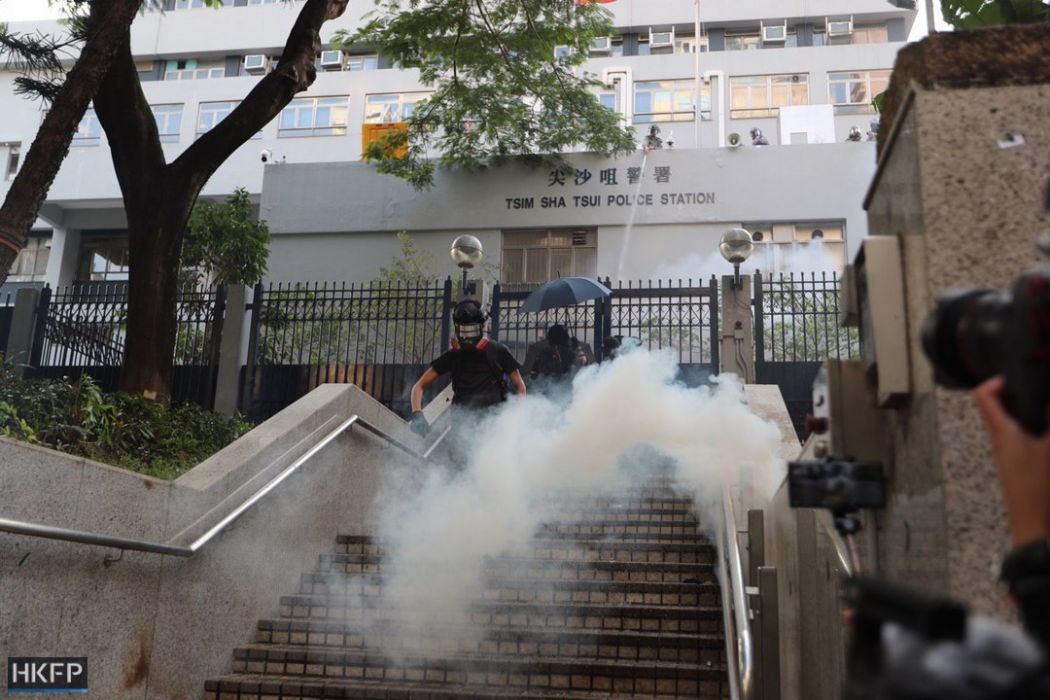
At around 3:15pm, tear gas canisters were fired from within the grounds.

A water cannon truck was deployed at around 4pm, firing blue liquid infused with tear spray.

Protesters fled north as the truck sped southwards and fired water on the steps of Tsim Sha Tsui’s Kowloon mosque.

Several journalists, bystanders and a lawmaker were hit.

Protesters help to remove blue bye from the water cannon after it stained Tsim Sha Tsui’s mosque. Vid: Telegram. #hongkong #hongkongprotests #antiELAB #china pic.twitter.com/XcujskloNQ
— Hong Kong Free Press (@HongKongFP) October 20, 2019
Some frontline protesters vandalised and broke into China-linked stores, a book shop and banks along the route.

Some MTR exits were barricaded, graffitied and firebombed.

A Bestmart 360 was trashed, with graffiti on its shutters reading “no looting.”

The snack and food chain’s chairman Lin Tsz-fung stands accused of having ties with the “Fujian gang” who have physically attacked protesters during the summer’s protests.
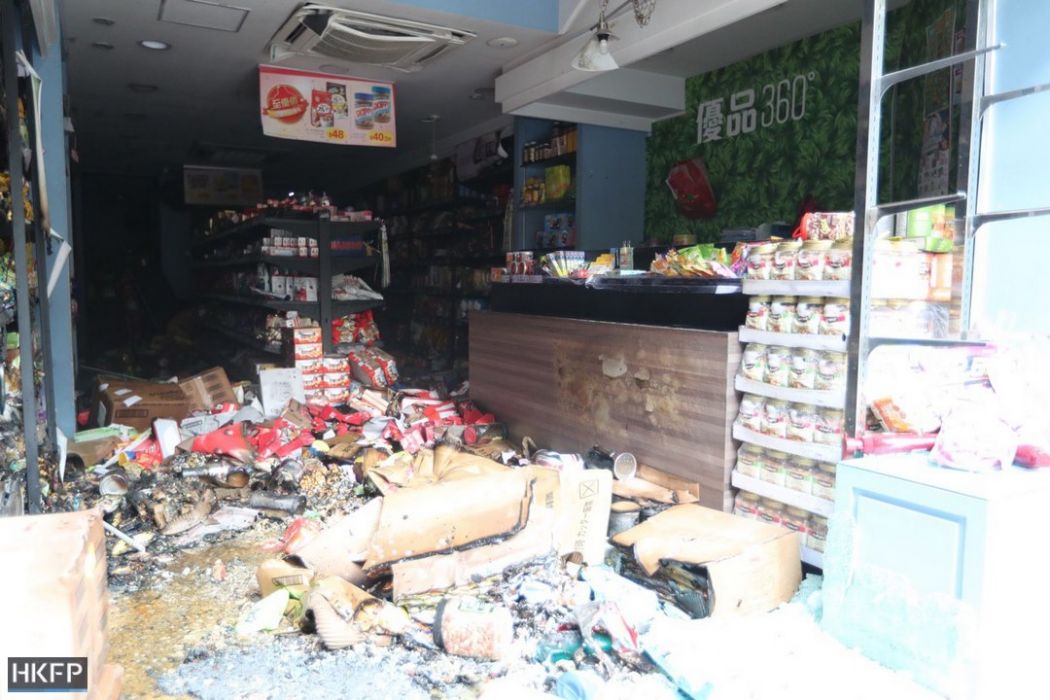
Protesters also targeted Chinese state-owned corporations, such as the Bank of China.
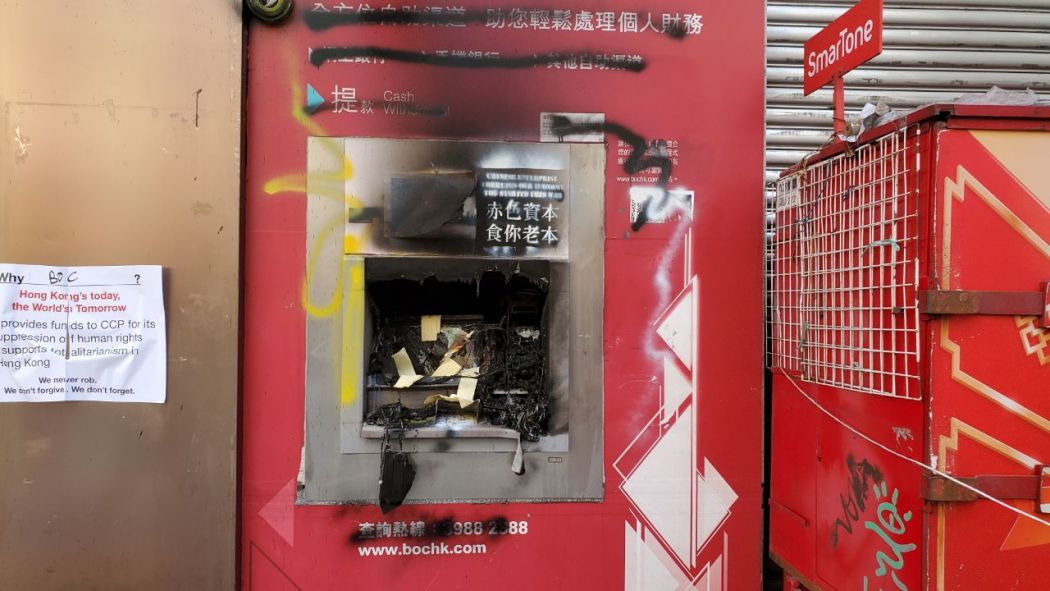
Glass at a branch of Hong Kong’s Bank of East Asia was also smashed, though graffiti scrawled on the outside claimed: “sorry, wrong bank.”

In a press release just before 4pm, police urged protesters to leave Yau Tsim Mong: “Rioters spray-painted, vandalised and hurled petrol bombs into Mong Kok, Yau Ma Tei and Austin MTR Stations… Police warn everyone at scene to stop their illegal acts immediately.”


A group of people from the ethnic minority community handed out water and other items to protesters outside the Chungking Mansions, where many ethnic minorities do business and live.
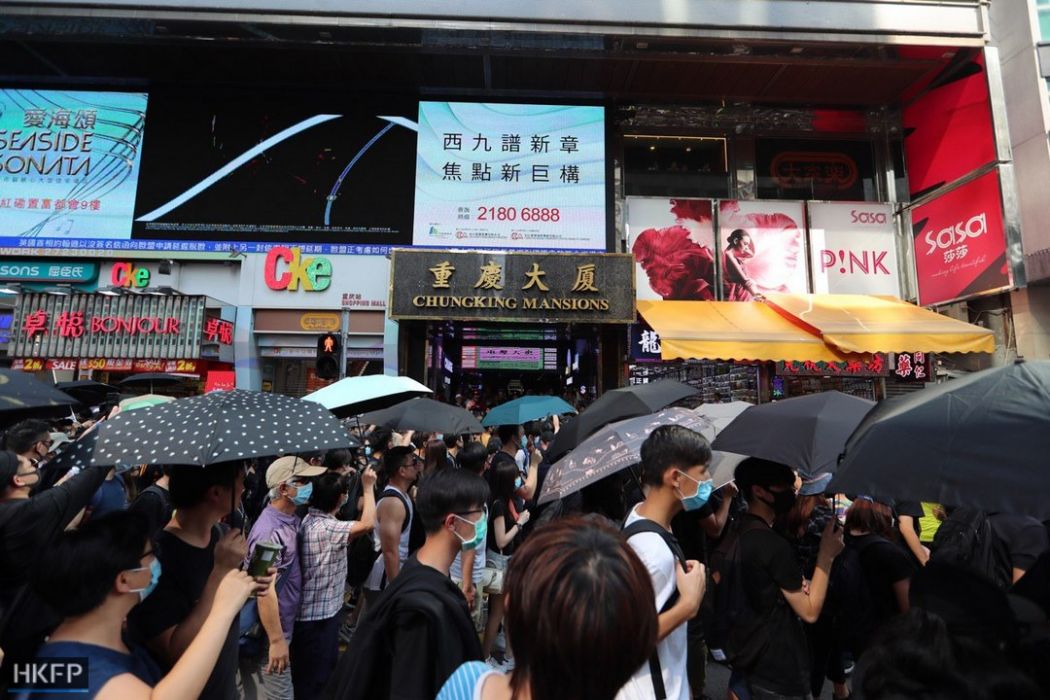
Outside the building, lawmaker Claudia Mo also held a placard that read: “Solidarity with ethnic minorities.”

Jimmy Sham, convener of the Front, was attacked by men in Tai Kok Tsui earlier this week – some reports claimed that the assailants were of South Asian descent.

On Sunday, Sham released a statement calling for unity and solidarity, and asking the public to refrain from targeting minorities: “Do not label anyone by ethnicity in the movement. I believe that, everyone who joins this path to democracy are our brothers and sisters, regardless of nationality, language, colour and race,” he said.
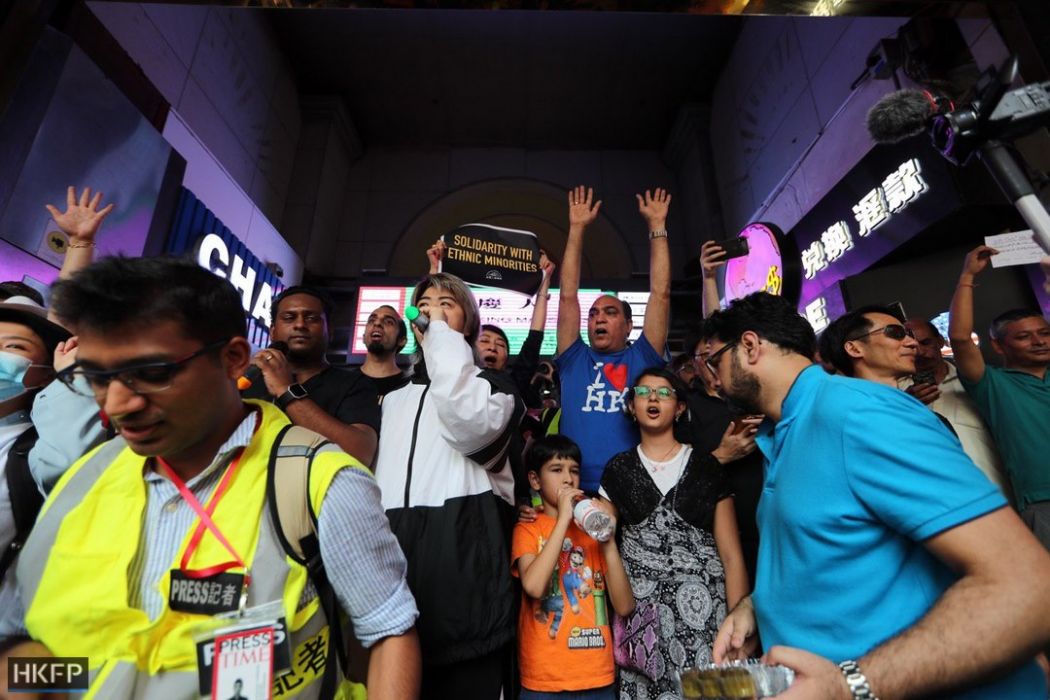
Sham also blasted authorities for prohibiting the Front’s initial plan to march on Sunday, saying: “The government doesn’t tolerate dissenting opinion, and isn’t capable to solve the social problems. Rather, it only attempts to silence people who address the problem. It only shows that the government is deceiving itself.”

Along the march, some protesters waved Catalan flags in solidarity with the region’s protests after independence movement leaders were jailed between 9 and 13 years.

As Hong Kong nears its 20th week of unrest, large-scale peaceful protests against a bill that would have enabled extraditions to China have evolved into sometimes violent displays of dissent over Beijing’s encroachment, democracy and alleged police violence.

Though the bill is to be axed, demonstrators are demanding an independent probe into police behaviour, amnesty for those arrested, universal suffrage and a halt to the characterisation of protests as “riots.”

Chief Executive Carrie Lam has agreed to withdraw the proposed extradition agreement with China which triggered the crisis but has not conceded to any of the other demands put forward by protesters. These demands include accountability for the police’s handling of the protests and amnesty for those arrested since the start of the movement in June.

Earlier on Sunday, Lam hinted in a TVB interview that the government may be considering ways to respond to demands for a fully independent probe into alleged police misconduct. But she refused to say whether a commission of inquiry was an option, according to RTHK.
Hong Kong Free Press relies on direct reader support. Help safeguard independent journalism and press freedom as we invest more in freelancers, overtime, safety gear & insurance during this summer’s protests. 10 ways to support us.

